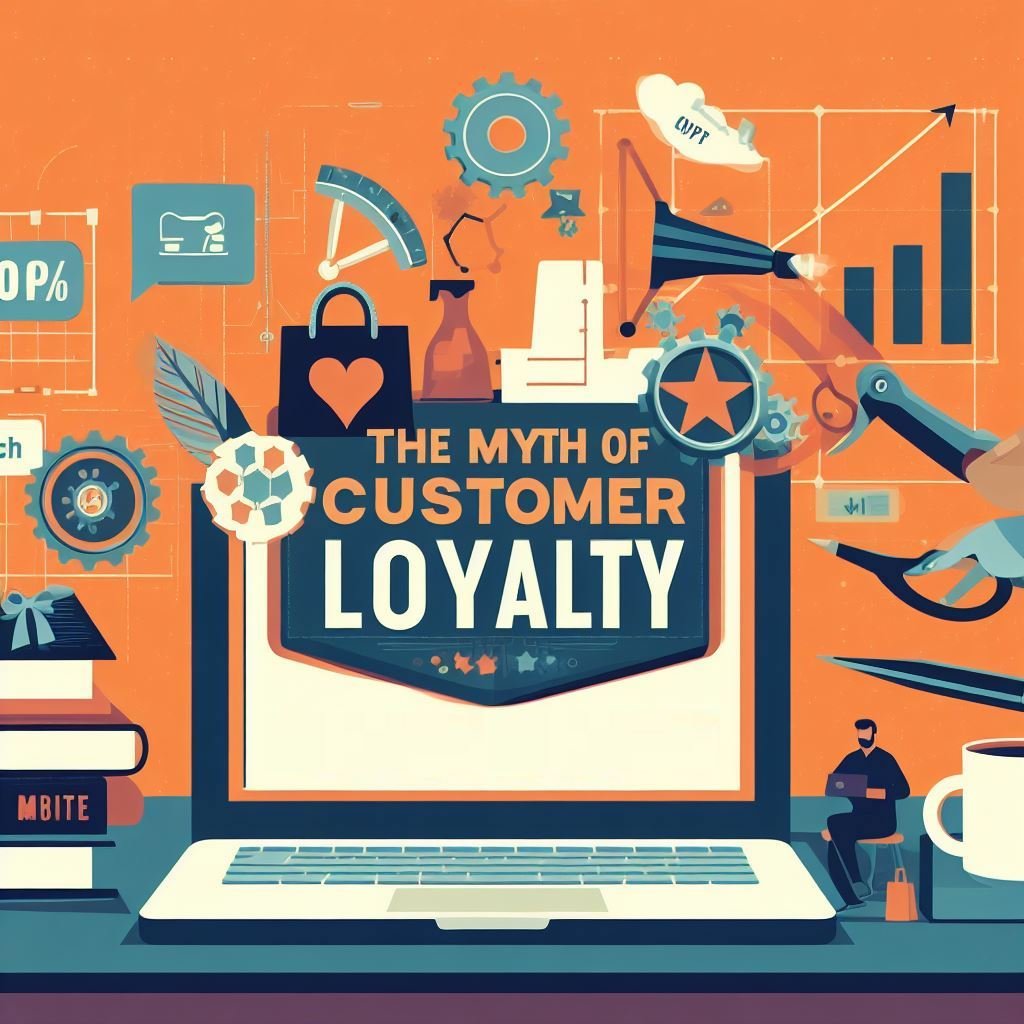The Myth of Customer Loyalty: A Consumer Psychology Perspective on the Limits of Loyalty Programs in Competitive Markets
In today's fast-paced and fiercely competitive market, the notion of customer loyalty is more mythical than ever. Companies pump enormous resources into loyalty programs, anchored by the understanding that it's cheaper to retain a customer than to acquire a new one. Yet, the emotional bond we romanticize as 'loyalty' is often nothing more than a practical calculation by savvy consumers.
This article delves deep into the psychology of consumer choices and challenges traditional ideas about customer loyalty.
The Mirage of Unshakeable Brand Allegiance
First, let’s dissect what loyalty means in this age of instant information and endless choices. The idea that consumers cultivate an almost romantic attachment to brands, strong enough to resist the seduction of cheaper or newer options, is starting to sound archaic.
Why?
Simply because consumers are far more informed and far less committed than before. Digital transformation has made price-comparison, user reviews, and alternative options just a click away. Consumers are perpetually weighing the benefits they receive against the ‘switching cost’—the time, money, and effort required to move to another brand or service. When a better deal comes along, yesterday’s loyalty can evaporate like morning dew in the sun.
For instance, think about your relationship with your local grocery store. You go there for its convenient location and perhaps the perks you gain through its loyalty program. But imagine a new store opens nearby, offering the same convenience but better prices and product selection. Would you stay loyal? If you answered “probably not,” you're not alone.
So, if even a habitual, multiple-times-a-week shopping experience doesn't cement loyalty beyond economic incentives, what will?
The illusion of Brand Loyalty
Even when individuals consistently purchase, for instance, clothing from the same brand for years, driven by emotional needs, it’s not a display of loyalty. Rather, it’s likely an exchange mechanism where status is acquired in return for money, serving as a tool for identity formation and reinforcement. This habitual purchasing is more about sustaining an alignment with one’s self-concept and fulfilling emotional needs than about any enduring commitment to a particular brand.
Friendly staff can foster a sense of loyalty among consumers by creating emotional connections. However, this perceived loyalty is usually more about the relationship with the staff than a genuine commitment to the brand. It's vital to understand that such loyalty is delicate and can be easily swayed by shifts in consumer-staff interactions.
The Shortcomings of Conventional Loyalty Programs
Traditionally loyalty programs, were thought of as fostering a sense of emotional connection, but really, they focus instead on transactional rewards like discounts and points, building a series of rational incentives. Sure, these programs may drive repeat business, but rarely do they cultivate a truly devoted following with any deep emotional engagement.
Worse yet, these programs can be financial sinkholes for companies. A surprising number of these programs barely break even, with some studies suggesting they contribute to as little as 2% of total sales.
Take industry giants like Apple and Google. Noticeably absent from their business strategies are traditional loyalty programs. They don’t need them, so why should you?
Data collection: A saving grace
However, not all is lost. Loyalty programs can serve as invaluable data mines, offering insights into consumer preferences, behaviours, and spending habits.
Capturing psychological data here is pivotal as it provides a nuanced understanding of the motivations and emotional drivers behind consumer choices. This knowledge enables companies to formulate more personalised and resonant engagement strategies, refining product offerings and enhancing perceived value of loyalty scheme offers.
Also, when your competitors boast loyalty programs, not having one can make you look like the odd one out, thereby pushing consumers into the arms of your rivals.
The Intelligent Approach: Consumer Psychology-Driven Loyalty Programs
In today’s tough market, it seems like every business has a loyalty program. But is there a smarter way to do them?
The answer is in understanding how customers think—consumer psychology. This method makes sure that loyalty programs are not just keeping up with the competition but are also cost-smart, basically set up to give real value without wasting money.
Creating Real Value
To really connect with customers, businesses need to give rewards and deals that match what customers like and want. This lets businesses fine-tune their loyalty programs, making sure every reward feels valuable to the customer (even if it doesn’t cost a lot). This makes customers feel closer to the brand without costing the business too much.
How deals are presented can make a big difference in how valuable they seem.
For example, a discount that’s presented as a “thank you” from the brand can feel more valuable to a customer. So, a “Save $10” deal might feel different to a customer compared to “10% off,” even if the actual money saved is the same.
Understanding how customers think about and choose deals is crucial for presenting them effectively.
Conclusion
The way customers see loyalty is changing a lot. What used to feel like a close connection is more and more about making smart choices, with lots of different factors coming into play. This isn’t the end of loyalty programs, though; it just means businesses need to be more thoughtful and understand their customers’ better. By getting to the heart of what influences perceptions of value, businesses can make their loyalty programs more effective and efficient without breaking the bank.


